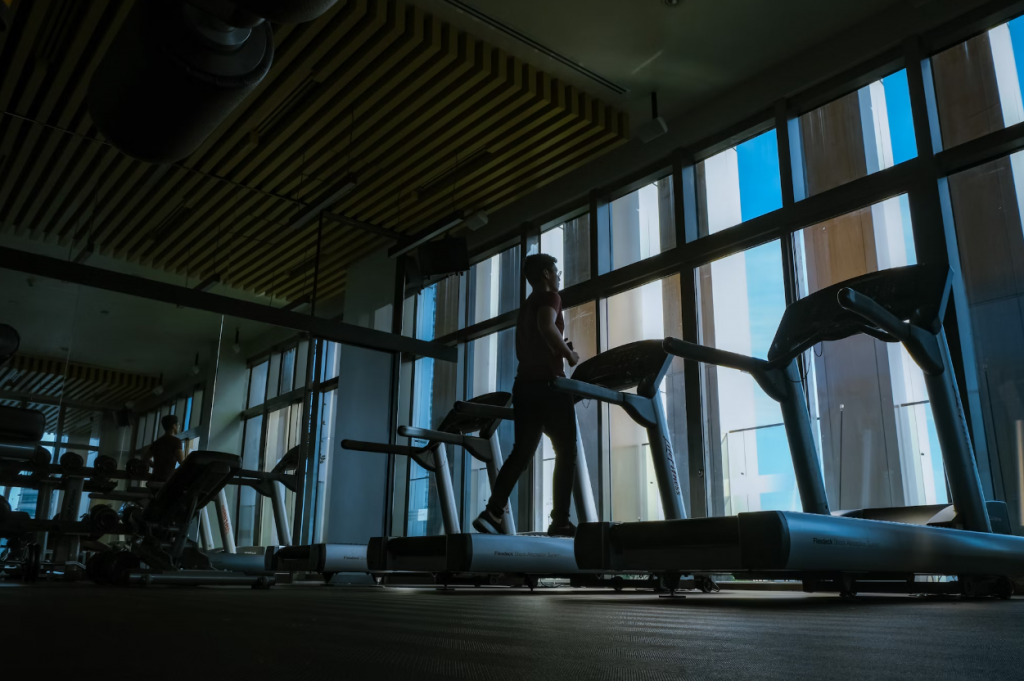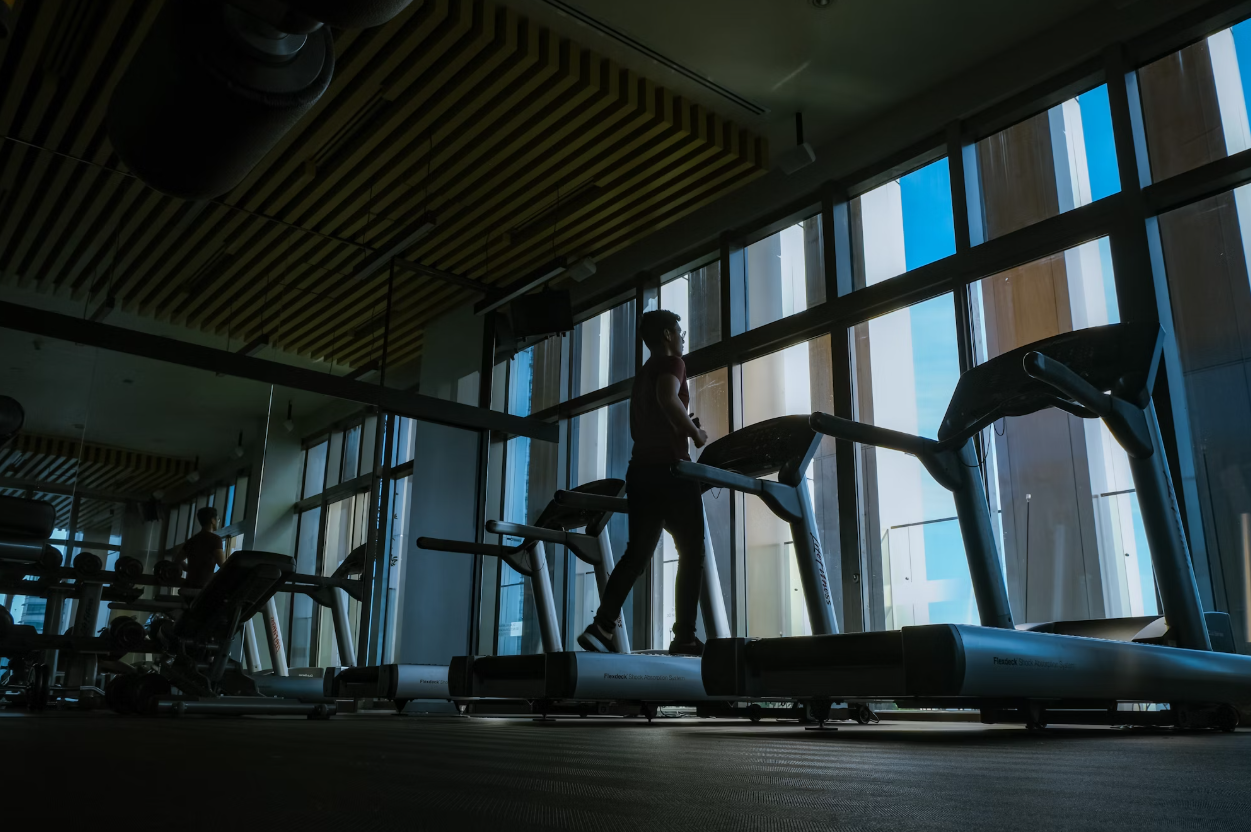Introduction
Building strength and stamina is key to overall fitness. As a beginner, you might feel overwhelmed by the vast number of exercises and routines available. But don’t worry—this article is here to guide you step by step toward creating a full-body workout that targets both strength and stamina. Whether you’re looking to improve your athletic performance or simply feel stronger in your day-to-day life, a well-rounded workout routine is essential.

Understanding Strength and Stamina
Before diving into your routine, let’s break down two important concepts: strength and stamina.
- What is Strength?
Strength refers to your ability to exert force. It’s about how much weight you can lift or how much resistance your muscles can overcome. Strength typically comes from lifting heavier weights with fewer repetitions. - What is Stamina?
Stamina is your body’s ability to sustain prolonged physical effort. It’s about endurance, or how long you can perform an exercise or activity before fatigue sets in. - The Relationship Between Strength and Stamina
Strength and stamina go hand in hand. While strength helps you perform exercises efficiently, stamina allows you to keep going longer. A balance of both is necessary for a successful workout routine.
Why a Full-Body Workout?
A full-body workout targets all major muscle groups, making it the perfect solution for beginners. Let’s explore why this approach is ideal for you:
- Benefits of Full-Body Workouts for Beginners
Full-body workouts are simple and time-efficient, especially when you’re starting out. They allow you to work every muscle group, helping you build a strong foundation while avoiding muscle imbalances. - Avoiding Common Pitfalls
For beginners, it’s easy to get lost in the details, like focusing on only one part of the body (e.g., only doing leg day). Full-body routines ensure you’re not neglecting important muscle groups, promoting overall strength and stamina.
Setting Realistic Goals
When embarking on any fitness journey, it’s important to set clear, achievable goals.
- Short-Term Goals
These could include things like being able to perform 10 push-ups or holding a plank for 30 seconds. Small, measurable goals will help you stay motivated and track progress. - Long-Term Goals
As you get stronger, set goals that align with your overall fitness ambitions. This could be achieving a certain weight in your deadlifts or completing a full-body routine without feeling overly fatigued.
Key Components of a Full-Body Workout
Not all exercises are created equal. A full-body workout should include a mix of exercises that build both strength and stamina.
- Compound Exercises vs. Isolation Exercises
Compound exercises like squats, deadlifts, and push-ups work multiple muscle groups at once, making them ideal for building overall strength. Isolation exercises target a single muscle group and are good for refining specific areas. - Strength vs. Endurance Training
Strength training typically involves lower repetitions with heavier weights, while endurance training focuses on higher repetitions with lighter weights. A balanced routine includes both.
The Beginner’s Guide to Full-Body Workouts
Getting started requires preparation.
- Warm-Up: Preparing the Body
Start each workout with a 5-10 minute warm-up, such as light jogging or dynamic stretches. This helps increase blood flow to the muscles and prevents injury. - Key Movements to Include
Your workout should include the major movement patterns: squatting, pushing, pulling, hinging, and core work. These ensure you engage all muscle groups.
Essential Exercises for Building Strength and Stamina
Here are some foundational exercises you should include in your full-body routine:
- Squats
Squats are essential for building leg and core strength. They target your quads, hamstrings, glutes, and core. - Push-Ups
Push-ups are a fantastic upper-body exercise that works your chest, shoulders, and triceps. They also engage your core. - Deadlifts
Deadlifts target your hamstrings, glutes, and lower back. They’re great for building total body strength. - Lunges
Lunges help develop leg strength and stability. They also target the glutes and quads. - Planks
Planks are perfect for building core strength. A strong core is essential for overall strength and stability. - Rows
Rows target your back muscles, which are often neglected. They improve posture and balance your pushing movements.
Sample Full-Body Workout Routine for Beginners
Here’s a simple, balanced weekly schedule:
- Day 1: Full-Body Strength
- Squats, Push-Ups, Deadlifts, Rows, Planks
- 3 sets of 8-12 reps for each exercise
- Rest 60-90 seconds between sets
- Day 3: Full-Body Endurance
- Lunges, Push-Ups, Squats, Planks
- 4 sets of 15-20 reps for each exercise
- Rest 30-60 seconds between sets
- Day 5: Active Recovery or Light Cardio
- Light jogging or cycling
- Stretching and foam rolling
Nutrition for Strength and Stamina
What you eat plays a huge role in how you perform and recover.
- Macronutrients: Carbs, Protein, and Fats
Carbohydrates provide energy for your workouts, while protein helps with muscle recovery. Healthy fats support joint function and hormone balance. - Hydration: The Unsung Hero of Performance
Stay hydrated before, during, and after your workouts. Dehydration can affect your performance and recovery.
Tracking Progress
Monitoring progress is key to staying motivated.
- How to Measure Strength Gains
You can track improvements in the amount of weight you’re lifting or the number of reps you can do for a given exercise. - How to Measure Stamina Improvement
Track how long you can sustain an exercise or how much endurance you’ve built over time.
Common Mistakes to Avoid
Avoid these common pitfalls as you build your routine:
- Overtraining
Give your muscles time to recover. Overtraining leads to fatigue and increased injury risk. - Poor Form
Maintaining proper form is crucial for preventing injury and maximizing results. - Ignoring Rest Days
Rest is when your muscles repair and grow. Don’t skip your rest days!
The Importance of Rest and Recovery
Rest is not a luxury; it’s a necessity.
- Why Rest is Crucial
Rest days allow your muscles to repair and grow stronger. Without sufficient rest, you risk burnout and injury. - Active Recovery Methods
Light walking, swimming, or yoga can aid recovery by promoting blood flow to the muscles.
Motivation and Consistency
Consistency is key to seeing progress. Here’s how to stay on track:
- Building a Routine
Stick to a regular schedule. Consistency will help form habits, and over time, it becomes second nature. - Staying Motivated Through the Process
Set mini-goals, reward yourself, and keep a workout journal to track your progress.
When to Seek Professional Help
Sometimes, it’s best to ask for guidance.
- Working with a Trainer
If you’re unsure about your form or need personalized advice, a trainer can provide valuable input. - When to Adjust Your Routine
If you hit a plateau or feel like you’re not progressing, it might be time to tweak your routine.

No responses yet